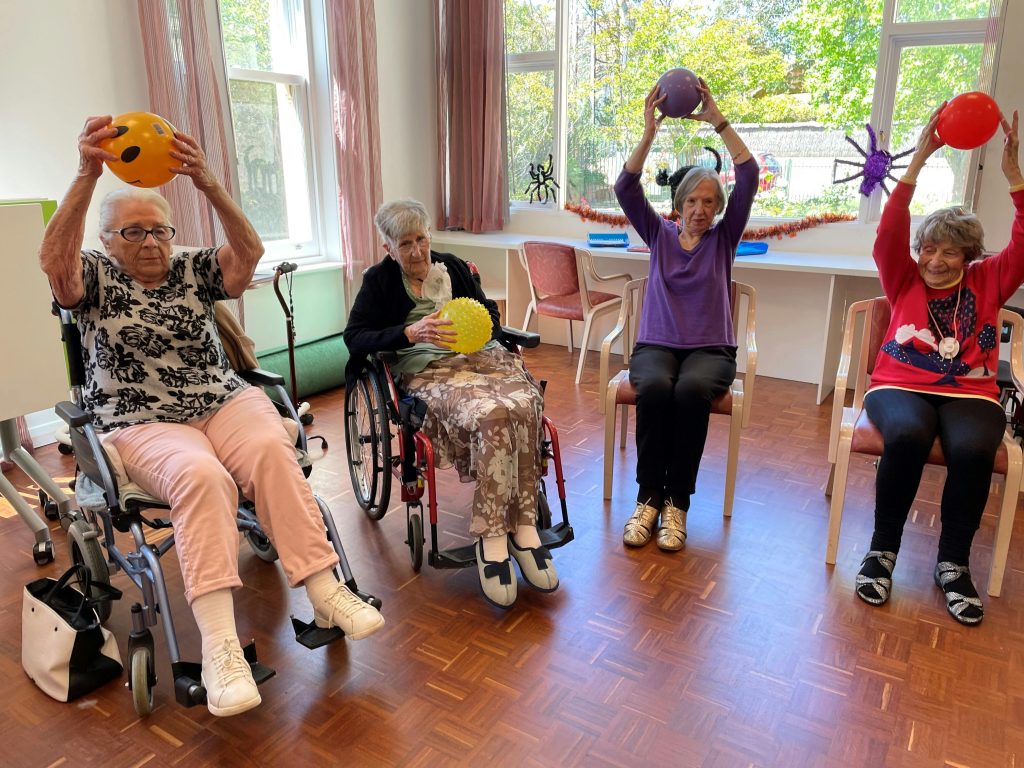In the evolving landscape of assisted living and memory care facilities, integrating technology in facilities has become essential to enhance the resident experience. This guide explores how to implement technology for convenience and communication, ensuring a better quality of life for residents while streamlining operations for staff.
Introduction
Technology plays a crucial role in modernizing assisted living facilities, providing residents with improved communication channels, convenient services, and enhanced safety. By leveraging technology effectively, facilities can not only boost resident satisfaction but also improve operational efficiency and staff productivity.
Technology for Convenience
1. Smart Home Devices
Smart home technology can significantly enhance convenience for residents by automating various daily tasks.
- Voice-Activated Assistants: Devices like Amazon Alexa or Google Home can assist residents with reminders, entertainment, and controlling smart home features.
- Smart Lighting and Thermostats: Automated lighting and temperature control can create a comfortable living environment tailored to individual preferences.
- Smart Locks and Security Systems: Enhance security with smart locks that allow keyless entry and monitor access.
2. Health and Wellness Monitoring
Integrating health monitoring technology ensures that residents’ health is continuously monitored, leading to timely interventions and better overall care.
- Wearable Health Devices: Track vital signs such as heart rate, blood pressure, and activity levels.
- Telemedicine Services: Enable remote consultations with healthcare professionals, reducing the need for physical visits.
- Medication Management Systems: Automated dispensers and reminders ensure that residents take their medications on time.
3. Transportation and Mobility
Facilitating easy transportation enhances residents’ independence and mobility.
- Ride-Sharing Apps: Partnering with ride-sharing services like Uber or Lyft can provide residents with reliable transportation options.
- Automated Wheelchairs and Mobility Devices: Advanced mobility aids that enhance movement within the facility and outside.
Technology for Communication
1. Communication Platforms
Effective communication platforms ensure that residents stay connected with their families, caregivers, and the facility’s management.
- Video Calling Apps: Tools like Zoom or Skype allow residents to have face-to-face conversations with their loved ones, regardless of distance.
- Internal Communication Systems: Dedicated platforms for residents to communicate with staff for assistance and information.
2. Social Media and Community Building
Social media can play a pivotal role in creating a sense of community among residents.
- Private Social Networks: Platforms like Facebook Groups or custom-built networks for residents to share experiences and stay connected.
- Event Calendars and Notifications: Digital boards and apps to keep residents informed about upcoming events and activities.
3. Emergency Communication
Ensuring reliable communication during emergencies is critical for resident safety.
- Emergency Alert Systems: Devices and apps that residents can use to alert staff during emergencies.
- Two-Way Radios for Staff: Instant communication tools for staff to coordinate and respond quickly to incidents.
Implementing Technology: A MECE Approach
To implement technology effectively, a MECE (Mutually Exclusive, Collectively Exhaustive) framework ensures all aspects are covered without overlap.
1. Needs Assessment
- Resident Needs: Understand the specific needs and preferences of residents through surveys and feedback.
- Facility Requirements: Assess the facility’s infrastructure and areas where technology can improve efficiency and safety.
2. Selection of Technology
- Research and Evaluation: Compare different technologies and vendors based on features, reliability, and cost.
- Pilot Testing: Implement a trial phase to evaluate the effectiveness and gather feedback before a full-scale rollout.
3. Training and Integration
- Staff Training: Provide comprehensive training to staff on using and managing new technologies.
- Resident Orientation: Educate residents on how to use new devices and systems, ensuring they feel comfortable and confident.
4. Monitoring and Evaluation
- Continuous Monitoring: Regularly check the performance and impact of implemented technologies.
- Feedback Mechanisms: Establish channels for residents and staff to provide ongoing feedback and report issues.
- Periodic Reviews: Conduct periodic assessments to make necessary adjustments and updates.
Benefits of Implementing Technology
Implementing technology in assisted living and memory care facilities offers numerous benefits:
Enhanced Resident Experience
- Improved Quality of Life: Automation and smart devices simplify daily tasks, providing convenience and comfort.
- Better Health Outcomes: Continuous health monitoring and telemedicine services lead to timely interventions and proactive care.
- Increased Independence: Mobility aids and accessible transportation options promote independence and freedom.
Operational Efficiency
- Streamlined Communication: Effective communication platforms reduce misunderstandings and improve coordination.
- Optimized Staff Workflows: Automation of routine tasks allows staff to focus more on personalized care.
- Cost Savings: Efficient resource management and reduced emergency incidences lower operational costs.
Conclusion
The integration of technology for convenience and communication in assisted living and memory care facilities is not just a trend but a necessity. By adopting smart home devices, health monitoring systems, and robust communication platforms, facilities can significantly enhance the resident experience. Implementing these technologies using a structured approach ensures that all needs are met, and the benefits are maximized, leading to a thriving, modern assisted living environment.



